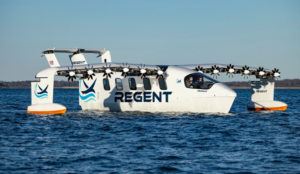
The Greek Lomar Shipping, a subsidiary of Libra Group, revealed today that its newly launched corporate venture lab, lomarlabs, has partnered up with Silicon Valley tech start-up Blue Dot Change.
The two partners will work together to design, develop, and test a compact, nature-based catalyst, whose purpose is to break down methane, a gas 25x more harmful than CO2 for climate change.
Lomarlabs utilises Lomar’s diversified fleet of vessels as ‘floating labs’ in a real-time marine environment, helping them hit their technical milestones and optimise their business models.
Blue Dot Change’s simple, cost-efficient dispenser aims to accelerate the pace of nature’s existing methane removal process from the air by releasing iron-rich particles that contain chloride into the air, which is then converted into vapor.
Sunlight then irradiates these particles, producing chlorine radicals. These, in turn, can drive reactions that convert methane into two water and one carbon dioxide molecule in the atmosphere.
As Lomar claims, ships are an ideal testing ground for this unproven and potentially transformational technology, as they already operate in an ideal environment for breaking down methane.
The catalyst is independent of the ship’s emissions, and will only be emitted when the meteorological conditions are optimal for it to work efficiently.
Blue Dot Change’s technology aims to alleviate the shipping industry’s methane footprint as there are no geological barriers to the wind blowing in an oceanic environment.
With ample access to wind, the catalyst permeating the atmosphere will increase the ability to naturally speed up the methane removal process.
Lomar explains that “if enough commercial ships were to adopt this technology the tech innovator hopes to cut rising temperatures by a third through methane removal from oceanic air.”
lomarlabs and Blue Dot Change will be orchestrating additional pilots to responsibly test the mechanical deployment of their dissipation system, as well as a weather station aboard one of Lomar’s vessels to collect useful data to enrich the model.
Preparations to install and deploy the first fully operational system on a Lomar vessel will take place sometime in late 2024 or early 2025.


